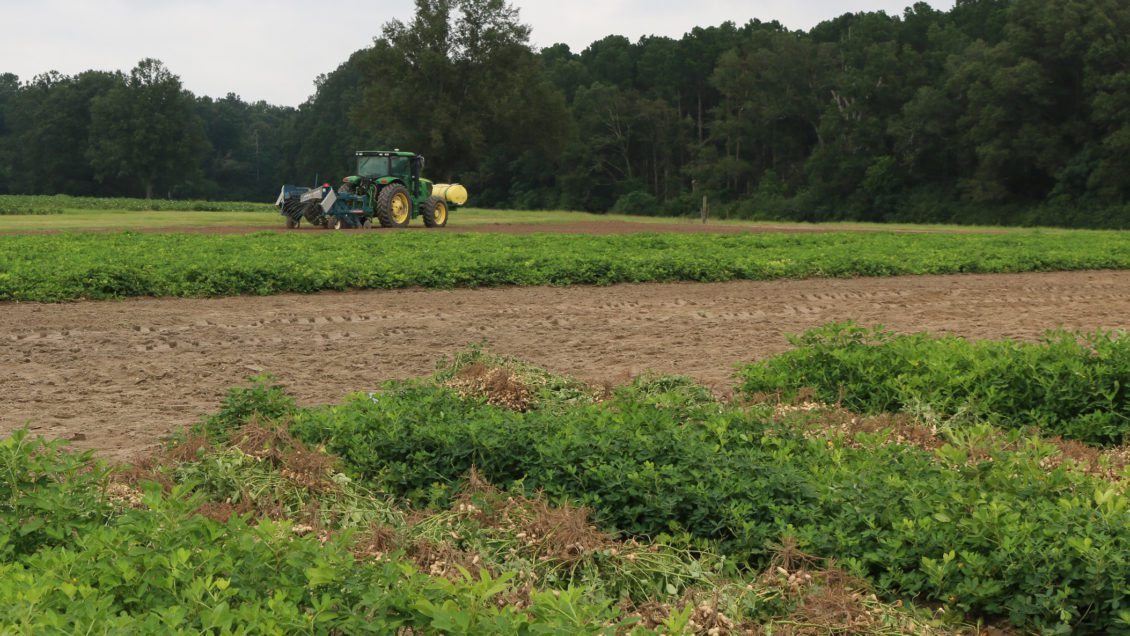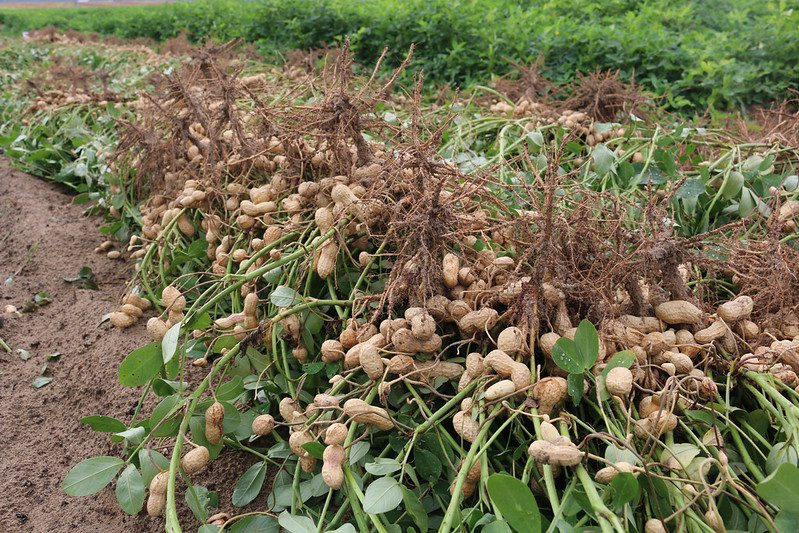
The 2022 South Carolina planted peanut acreage is “slightly up” from 2021 and crop prices are partly to thank.

During the 2022 Peanut Field Day at the Clemson Edisto Research and Education Center in Blackville, South Carolina, growers saw how new varieties grew and stacked up compared to current standards. They also learned how prices reflect crops rotated with peanuts.
“Corn and cotton are excellent rotational crops for peanuts,” said Dan Anco, Clemson Cooperative Extension Service peanut specialist. “Prices were up for these crops, so more acres were planted, which stabilized planted peanut acres relative to last year. A good rotation program is paramount to sustainable, long-term peanut production.”

As the growing season gets underway, prices remain favorable. Nathan Smith, Clemson Extension Agribusiness Program team leader located at the Sandhill REC in Columbia, South Carolina, reports corn rose from $5.50 at beginning of 2022 to $7 by April during planting. Price rose another 50 cents by May before falling to $6 in the summer. Corn prices have reached $6.85 since Sept. 8.
The Sept. 12, 2022, United States Department of Agriculture National Agricultural Statistics crop report shows South Carolina peanut acreage for 2022 set at 71,000. Record high yields are forecast for Florida, North Carolina, South Carolina and Virginia.
As for cotton, Smith said prices rallied from 92 cents per pound at the beginning of January to 96 cents per pound by April. It peaked at $1.32 on May 16 and closed at $1.02 on Sept. 14.
In addition to corn and cotton, sorghum and sweet potato are also ideal rotational crops for peanut.
Insect pests, diseases, weeds and fertilizer
Field day events also gave growers opportunities to examine plots treated with different insecticides for tomato spotted wilt virus and thrips. Tomato spotted wilt virus occurs in South Carolina every year. Anco said it is transmitted to peanuts by thrips, primarily tobacco thrips, and stunts plants, reduces yields and causes shriveled, misshapen pods. Visit https://bit.ly/TSWV_6StepProgram for information to help reduce this virus.

In addition to diseases, growers also should maintain their vigilance against Texas panicum and volunteer peanuts in rotation crops. Michael Marshall, Clemson Extension weed scientist, said herbicides to control these grasses include Clethodim for Texas panicum and Alite 27, an upcoming product for use against volunteer peanuts in Axant Flex cotton. Axant Flex technology features the Axant herbicide trait, the first trait developed and commercialized in cotton to enable the use of the Alite 27 herbicide. Axant Flex technology is anticipated to be available with Alite 27 herbicide for the 2024 growing season.
Calcium is critical for peanut development and Bhupinder Farmaha, Clemson Extension nutrient management specialist, said gypsum is an “excellent source of calcium” for peanut.

Gypsum often is supplied as a calcium source to produce high-yielding and good-quality peanuts through surface applications on highly weathered soils of the southeastern United States. Applying gypsum also increases soil nutrient availability and plant nutrient uptake.
“But over-application potentially can cause nutritional imbalances and decrease farm profits,” Farmaha said.
The South Carolina recommendation is to apply 1,500 pounds of gypsum at bloom to all Virginia type peanuts, all seed production peanuts and to Runner type peanuts with less than 400 pounds per acre soil test. An application of 1,000 pounds per acre gypsum to runners with 400 – 600 pounds per acre soil test also is recommended.
Peanut breeding
Sachin Rustgi, a plant breeder at Clemson’s Pee Dee REC in Florence, South Carolina, and Zachary Jones, Clemson plant and environmental sciences doctoral student, talked about projects they are involved in related to developing peanut varieties for people with peanut allergies and peanut varieties for warmer climates.

“In addition to wheat, peanut is a primary source of energy and proteins, specifically to populations in the most populated areas of the world,” Rustgi said. “But there are people allergic to peanut. Our research primarily focuses on the development of genetic resources to breed safe crops for people experiencing these food-borne disorders.”
Information from the National Oceanic and Atmospheric Administration (NOAA) shows Earth’s temperature has risen by 0.14 degrees per decade since 1880. The rate of warming since 1981 is more than twice that at 0.32 degrees per decade. Additional information from NOAA shows August 2022 was the sixth warmest in 143 years. Rising temperatures can have detrimental effects on peanut yields.
“Because of rising temperatures, there is a great need for heat-tolerant peanuts,” Jones said. “We are looking at how plants respond to heat stress in our quest to develop a peanut variety that can withstand rising temperatures.”
Pollen viability and lipid portions of cell membranes in peanut plants are two areas the researchers are focusing on.
Peanut harvest technology

Kendall Kirk, Clemson precision agriculture engineer, talked about using precision agriculture to harvest peanuts and measuring research yield data. Kirk has developed several harvest technologies to help farmers maximize yields by cutting digging losses.
“Proper peanut digger setup and operation is critical to profitability,” Kirk said. “Our research has found significant increases in yields can be attained by adjusting the peanut digger conveyor speed.”
Some diggers now incorporate in-cab conveyor speed readouts, which show the conveyor speed so it can be adjusted according to the desired speed. For growers who don’t have these digital readouts, Kirk has developed an online calculator that can be used to measure conveyor speed. The Peanut Digger Conveyor Speed Calculator can be found at https://bit.ly/PeanutDiggerConveyorSpeedCalculator.

-END-
Get in touch and we will connect you with the author or another expert.
Or email us at news@clemson.edu
